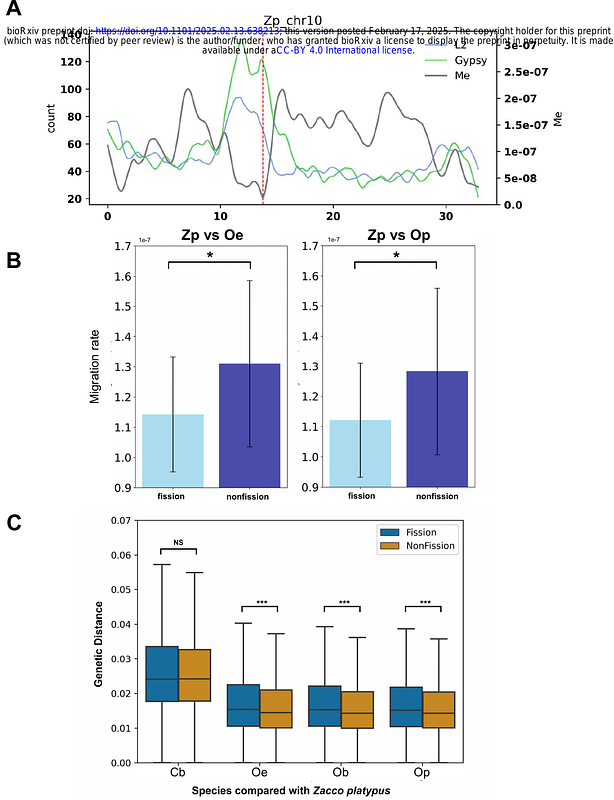Massive Chromosome Fission and Speciation in Asian River Chub: Integrating Kinetochore Reproduction Theory with Transposable Element Dynamics

Massive Chromosome Fission and Speciation in Asian River Chub: Integrating Kinetochore Reproduction Theory with Transposable Element Dynamics
Tai, J.-H.; Wang, T.-Y.; Ma, G.-C.; Wu, Y.-W.; Yu, T.-H.; Wang, C.-F.; Liao, T.-Y.; Huang, S.-P.; Wang, F.-Y.; Terai, Y.; Wu, T.-H.; Hsu, C.-H.; Yu, H.-T.; Shao, K.-T.; Chaw, S.-M.; Wang, H.-Y.
AbstractChromosome rearrangements significantly influence speciation, but the role of chromosome fission is paradoxical due to its link with unbalanced segregation. The kinetochore reproduction theory suggests that fissions from kinetochore duplication should allow normal segregation, though empirical support remains scarce. In the Opsariichthyini tribe (Asian river chub), chromosome number vary from 2N=48 in most genera to 76-78 in Opsariichthys due to 15 fission events. Opsariichthys harbors over 15 species, substantially surpassing the typical three to four species in other genera. This exceptional diversity, coupled with dramatic chromosome fission, makes the Opsariichthyini as an ideal model for studying speciation driven by chromosome fission. We sequenced and annotated genomes from five representative species, finding that significant transposable element (TE) accumulation in centromeres likely contributes to centromeric DNA expansion. This, in turn, may have facilitated neokinetochore formation, potentially leading to chromosome fissions. The fissioned chromosomes showed lower migration rates and higher genetic divergence between species than their intact counterparts, highlighting their role as reproductive barriers that promote speciation. Our findings offer unprecedented support for the kinetochore reproduction theory and elucidate the complex interplay between TE activities, genomic structure, and speciation.